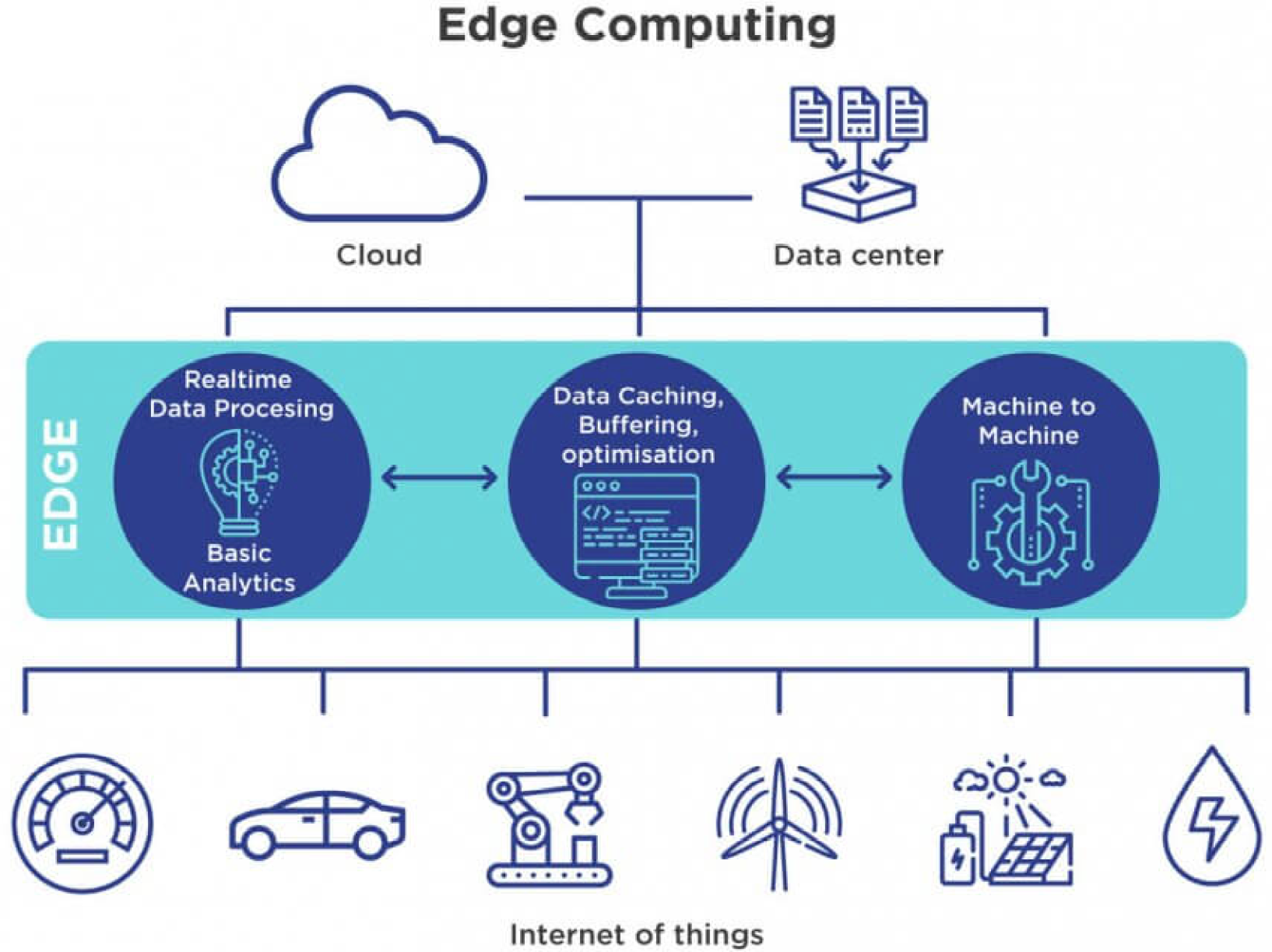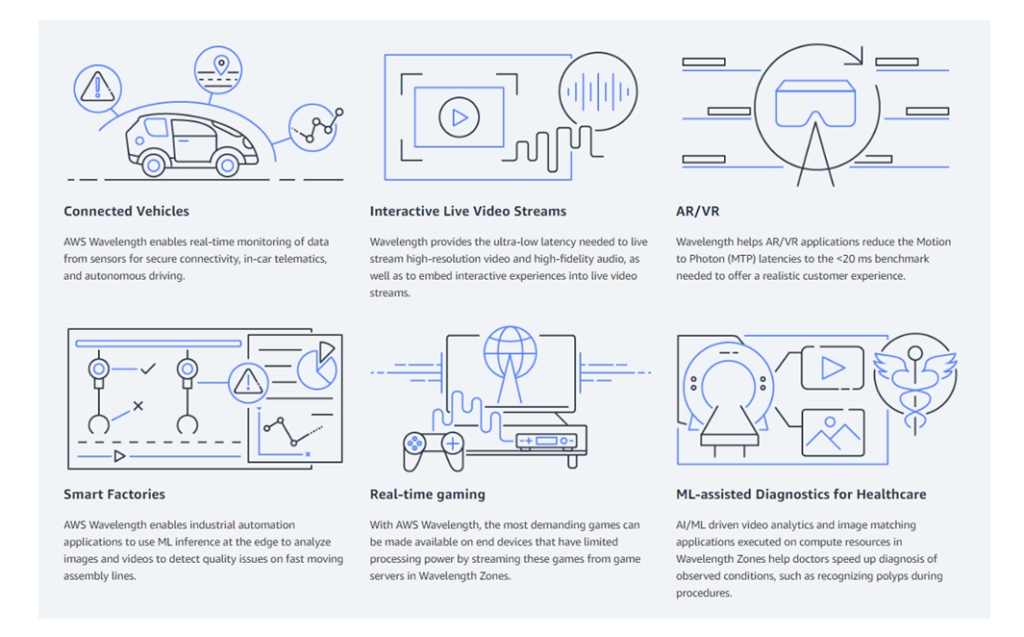What is Edge Computing?
Introduction
We've heard a lot about Metaverse and Web3 lately, and meanwhile, we're bombarded with the huge M&A deals for gaming companies.
- Last week, Take -Two, the interactive entertainment developer and marketer, acquired Zynga, an American social game developer, for $12.7 billion.
- Today, Microsoft announced the acquisition of Activision Blizzard, an American video game publisher, for $68.7 billion.
- Tesla's FSD software the package increased to $12,000 in 2022.
It is apparent that mega companies are doubling down for the upcoming explosion of technological evolution, whether it is Industry 4.0, IoT or AIoT, metaverse, web3 or self driving etc.
As industry researcher, what we found really interesting is at the intersection of all these next-gen applications there is Edge Computing which we might not want to miss out. We will look into Edge and its Computing all together, with its benefits, architecture, use cases and future potentials.
What is Edge Computing?
The concept of Edge Computing isn't new. There is no standard Edge definition or environment, and Edge is more likely defined by each business and enabled by application architecture.
Edge is a strategy to extend a uniform environment all the way from the core datacenter to physical locations near users and data, connecting millions of IoT devices, enabling the speed of 5G networks. Many edge use cases are rooted in the need to process data locally in real time—situations where transmitting the data to a datacenter for processing causes unacceptable levels of latency.
Although the highly-distributed computing has been around for decades, Edge is just a lot more distributed, more mission critical, more connected and smarter.
The goal is to support new applications with lower latency requirements while processing data more efficiently to save network cost.
What is the architect of Edge Computing Ecosystem?
While cloud computing has traditionally served as a reliable and cost-effective means for connecting many of these devices to the internet, the continuous rise of IoT and mobile computing has created the demand for lower network latency and more reliability.
Edge computing technology is now emerging to meet these demands.
One way to view edge computing is as a series of circles radiating out from the code data center. Each represents a different tier moving closer to the far edge.
(1) Provider/enterprise core:
These are traditional "non-edge" tiers, owned and operated by public cloud providers, telco service providers, or large enterprises.
(2) Services provider edge:
These tiers are located between the core or regional data centers and the last mile access, commonly owned and operated by a telco or internet service provider and from which this provider serves multiple customers.
(3) End-user premises edge:
Edge tiers on the end-user side of the last mile access can include the enterprise edge (e.g., a retail store, a factory, a train) or the consumer edge (e.g., a residential household, a car).
(4) Device edge:
Standalone (non-clustered) systems that directly connect sensors/actuators via non-internet protocols. This represents the far edge of the network.

What are the benefits of Edge?
(1) Cost saving:
Companies can optimize the flow of data into central systems and retain the bulk of raw data at the edge where it is useful. Bandwidth and costs are reduced.
(2) Speed and latency:
Placing compute power near the edge saves time. Milliseconds make a difference for many applications.
(3) Security and privacy:
Data is analyzed locally and protected by the security blanket of an on-premises network or the closed system of a service provider.
(4) Remote reliability:
Edge devices locally store and process data and work with edge data centers to overcome any intermittent connectivity issues.
(5) Rapid scalability:
Installing edge data centers and IoT devices can allow businesses to rapidly scale their operations.
(6) Decentralization and diversification:
as IoT devices become more present in our daily lives, Edge Computing will become increasingly essential to prevent the system from collapsing. Edge computing is allowing them to adopt a decentralized computing architecture on a massive scale, but each case needs a particular treatment: Cloud Edge, IoT Edge or Mobile Computing.
What are the successful use cases?
Many edge use cases are rooted in the need to process data locally in real time—situations where transmitting the data to a datacenter for processing causes unacceptable levels of latency.
(1) Connected & autonomous vehicles:
Telsa cars have powerful onboard computers which allow for low-latency data processing (in near real-time) collected by the vehicle’s dozens of peripheral sensors. This provides the vehicle with the ability to make timely, autonomous driving decisions.
Because of the sheer amount of data, autonomous vehicles like self-driving cars process sensor data on board the vehicle in order to reduce latency. But they can still connect to a central location for over-the-air software updates.
(2) Smart home devices:
By using edge compute and bringing the processing and storage closer to the smart home, backhaul and roundtrip time is reduced, and sensitive information can be processed at the edge. As an example, the time taken for voice-based assistant devices such as Amazon’s Alexa to respond would be much faster.
(3) Cloud Gaming:
Cloud gaming, a new kind of gaming which streams a live feed of the game directly to devices, (the game itself is processed and hosted in data centres) is highly dependent on latency.
Cloud gaming companies are looking to build edge servers as close to gamers as possible in order to reduce latency and provide a fully responsive and immersive gaming experience.
(4) Smart city - traffic management:
Edge computing can enable more effective city traffic management. Examples of this include optimizing bus frequency given fluctuations in demand, managing the opening and closing of extra lanes, and, in future, managing autonomous car flows.
(5) Real time machine learning and AI:
Advances in new AI and machine learning capabilities, in conjunction with lower-power and higher-performance processors and other components to help lower costs, can improve the accuracy and performance of prediction systems, but typically doesn’t reduce the degree to which this drift happens.
(6) Virtualized radio networks and 5G (vRAN)
The new virtualized RAN hardware needs to do complex processing with a low latency. Operators will therefore need edge servers to support virtualizing their RAN close to cell tower.

What are the top players in Edge currently?
- AWS Edge
- EdgeConneX
- ADLINK Technology
- Vapor IO
- Mutable
- Microsoft Azure
- MobiledgeX
- Schneider Electric
- Equinix
- ClearBlade

What are the Economic Impacts and Opportunities?
The global edge computing market was forecasted to reach $15.7 billion by 2025, representing an astounding 34.1% compound annual growth rate (CAGR).
The economic value generated by use cases involving internet of things (IoT) applications alone will be somewhere between $3.9 trillion and $11.1 trillion per year by 2025. Add in all the other use cases for edge platforms and the potential for positive economic impact becomes enormous.

